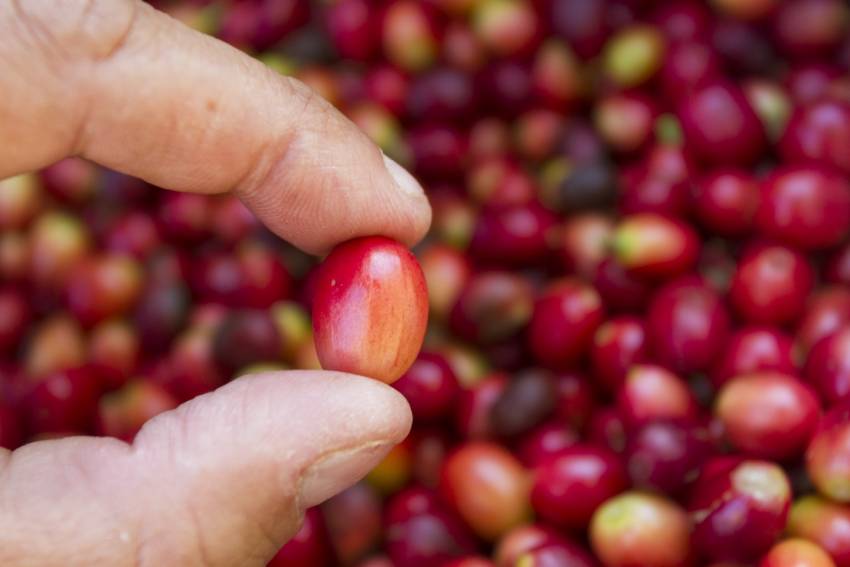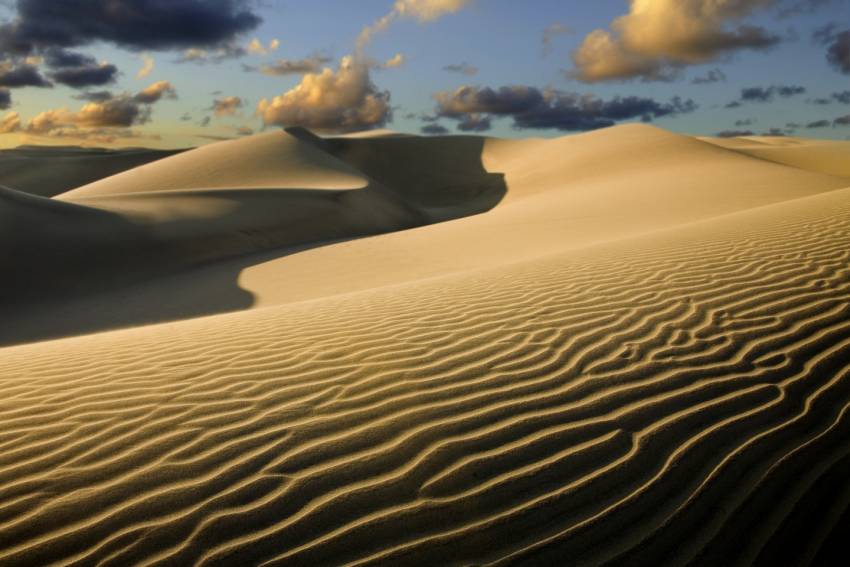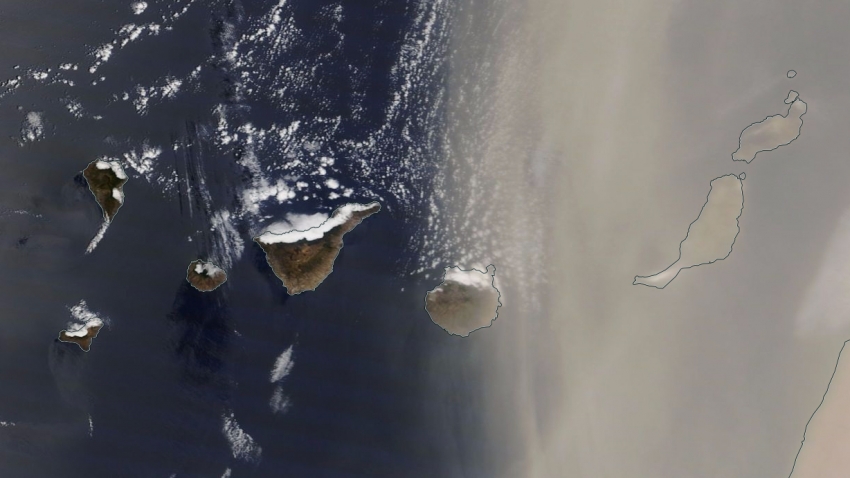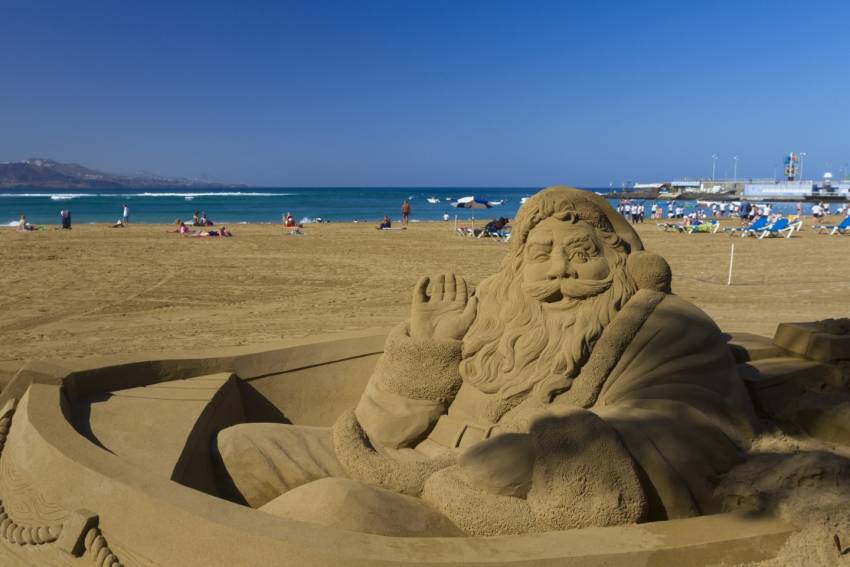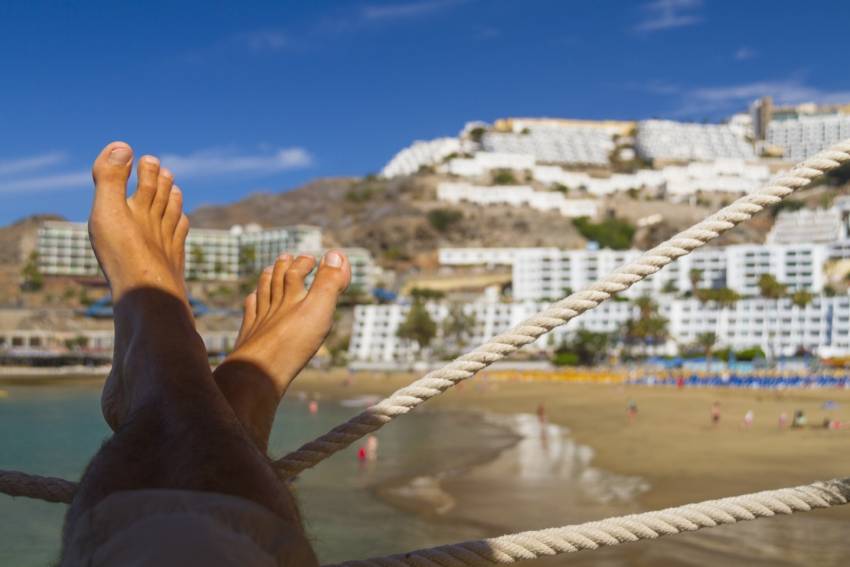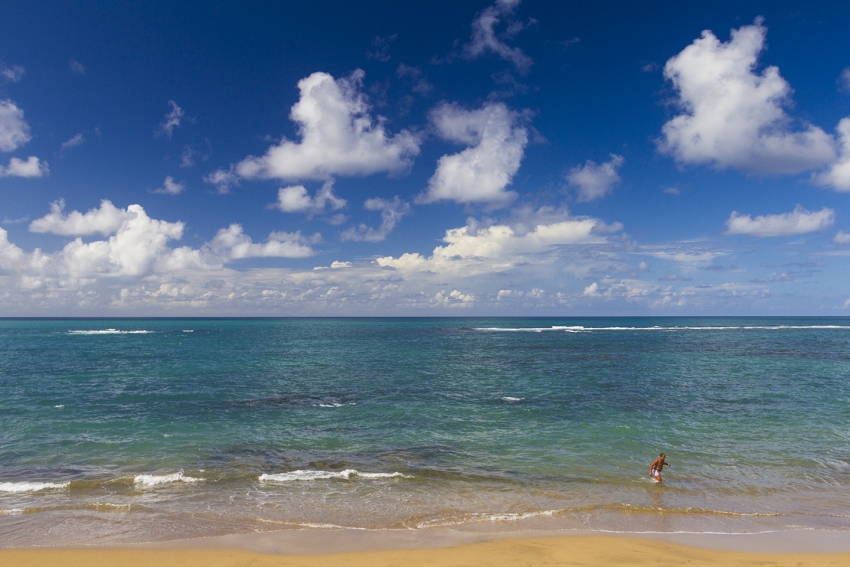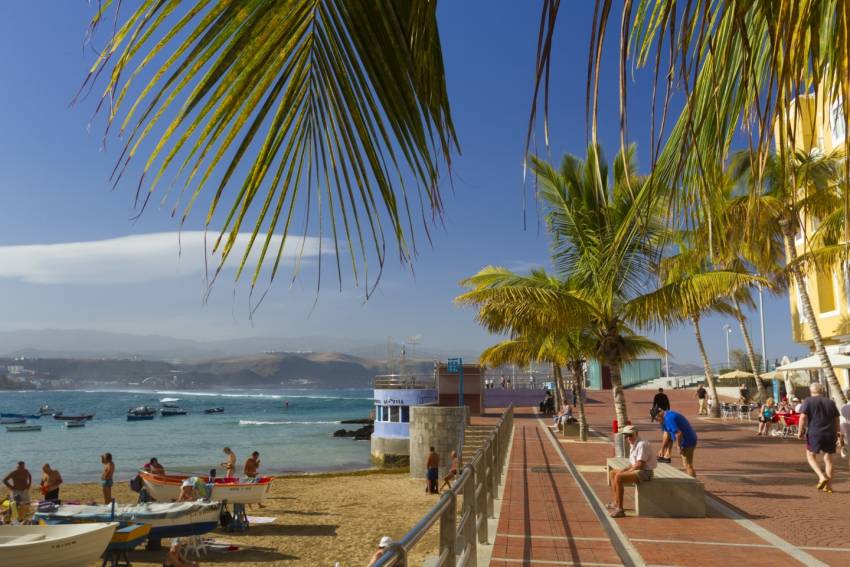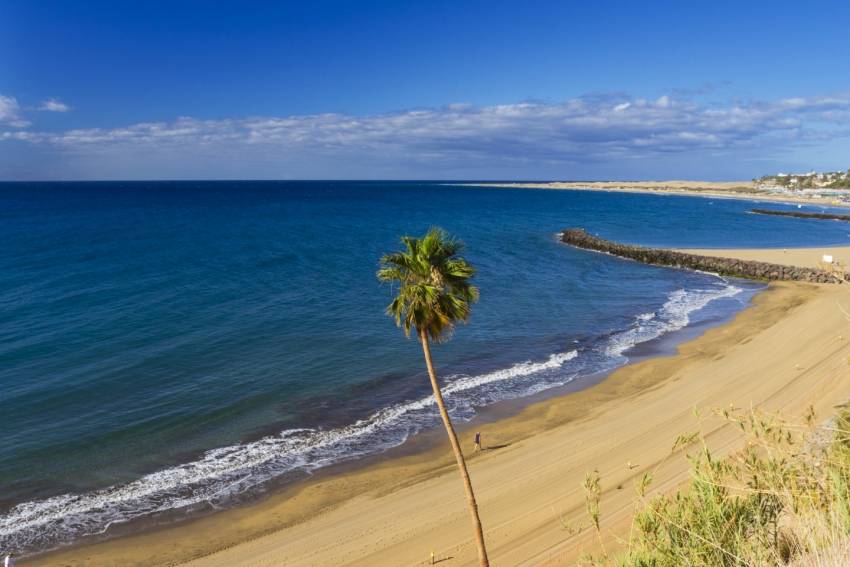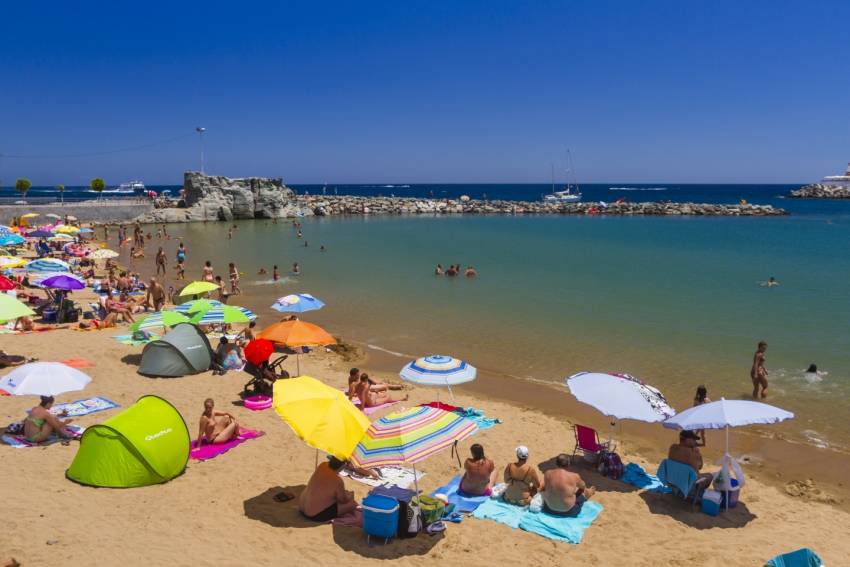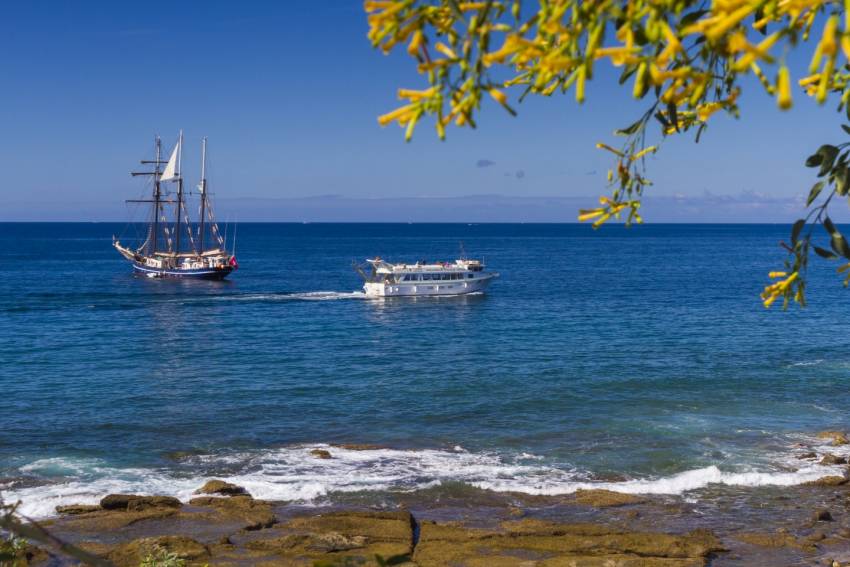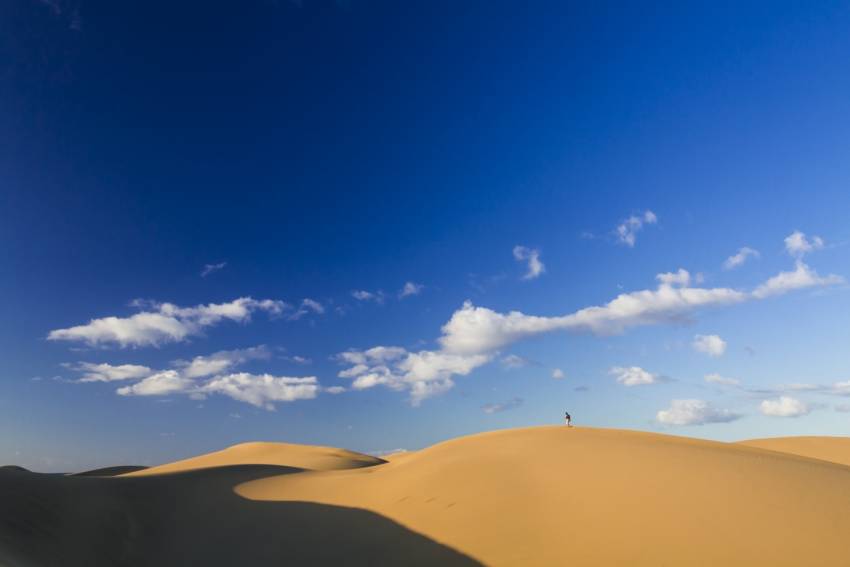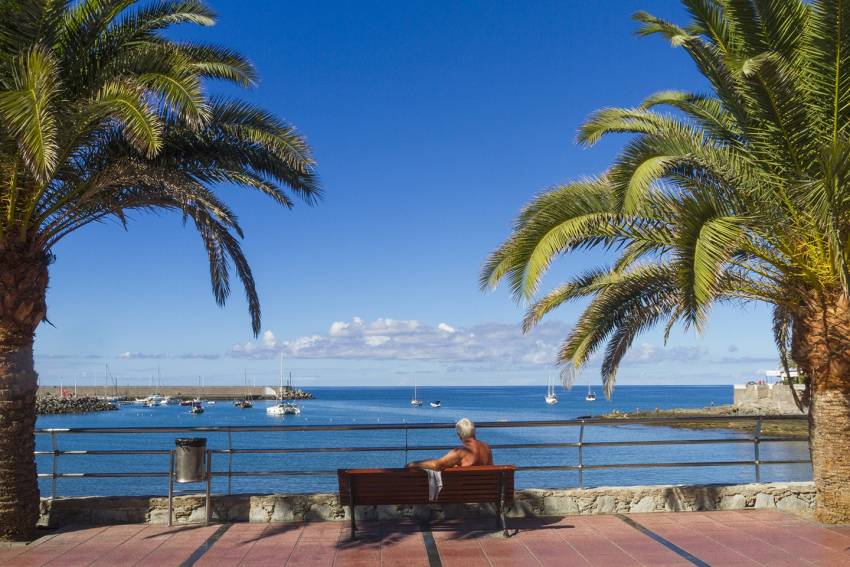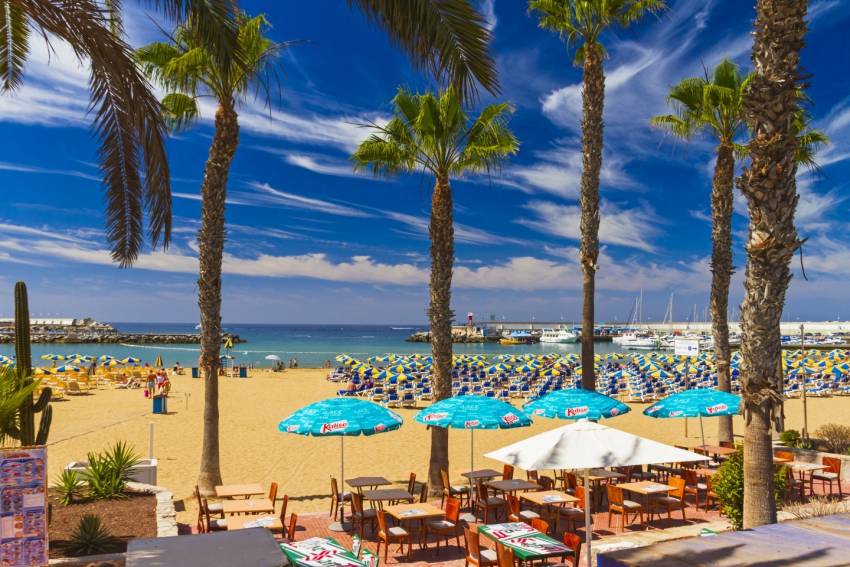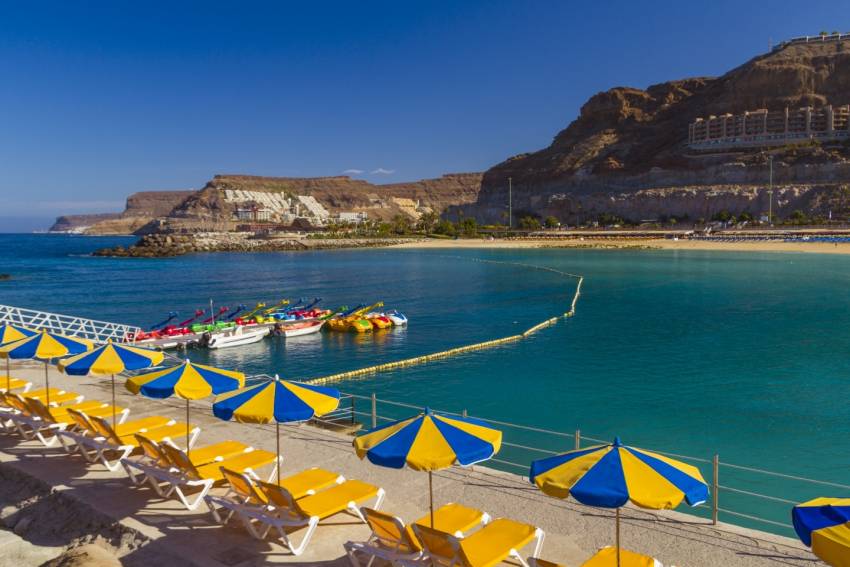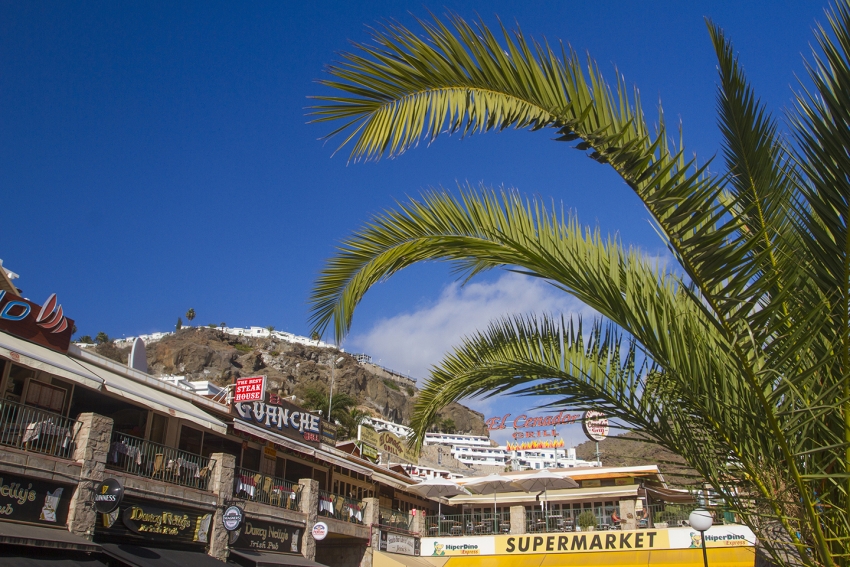Flor de Guia Cheese
Moist and slightly bitter with a faint taste of grass and old socks: Gran Canaria’s Flor de Guía is the island’s most distinctive cheese. It is still made by traditional methods and is protected by a EU Designation of Origin. It is also one of the few cheeses that uses natural vegetable rennet (extracted from thistle or cardoon flowers) rather than animal rennet. This makes it suitable for vegetarians.
Creamy flor de Guia cheese has a soft, yellow rind and is creamy and riddled with small holes. It normally made in thin wheels about four inches deep.
You can buy Flor de Guia in the shops but it isn’t the real stuff. Most of the vacuum packed supermarket stuff is media flor made with a mixture or animal and vegetable rennet. It tends to be much denser and dryer than pure flor de Guia. For the genuine article head to the cheese stall at one of the island’s markets. Guia town itself has a tiny Sunday market in front of the church but nearby Galdar’s Thursday market is much bigger.
Agaete Coffee
A small bag of Gran Canaria coffee costs over 15 euros because it is only grown in the mild Agaete Valley. Known as Europe’s only coffee but a more accurate description is the most northerly coffee in the world.
Coffee was first grown in Gran Canaria in 1788 but faded away except in Agaete where the farmers grew if for their own morning cuppa. The bushes grow organically in the shade of mango, papaya and orange trees. Gran Canaria coffee beans are hand picked and sun dried and yield a delicate, fruity coffee with a hint of liquorice. Pretty tasty!
Right now Gran Canaria coffe is expensive but we’ve noticed a lot of coffee bushes lining banana plantations in the hills behind Galdar and Arucas. It won’t be long before the supply increases.
Temisas Olive Oil
Olive trees live a long time and don’t bear grudges. That’s just as well considering that Gran Canaria neglected its groves for over 100 years. Most of the ripe olives rotted on the ground and even the ones that got harvested were pickled ferociously in mojo.
The somebody tested the oil from the gnarled old trees and found that it is first class. Now Gran Canaria’s olivos are the island’s latest way of turning the sunshine into gold.
Farmers are busy learning the skills that their grandparents forgot and new groves go in every year. The best Gran Canaria olive oil comes from the old trees around Temisas, the town with longest history of olive growing in the Canary Islands.
Temisas’ grizzled survivors are old varieties that have died out everywhere else in Spain. Their oil is fruity and herbal with a good peppery kick and a distinctive smell of ripe tomatoes.
Gran Canaria’s olives are harvested by hand and cold pressed. A small bottle costs about 5 euros and is best served on salads or used plain as a dip for fresh bread.
Fresh Tropical Fruit
The best tropical fruit in Gran Canaria never makes the supermarkets. It’s sold in local markets and village shops. Look out for boxes of fruit that smells fantastic and has fresh green leaves still attached.
Because Gran Canaria is so high we also grow fabulous soft fruit like peaches, apricots, plums, apples and pears. Gran Canaria’s oranges are fantastic, especially the huge navel oranges that ripen during the winter.
Gran Canaria’s bananas are fantastic and taste far better than the Caribbean bananas you get in European supermarkets. It’s because they are a sweet variety and are picked ripe and never refrigerated. Bananas are available all year round.
Gran Canaria’s pineapples are delicious and are available most of the year. Only buy them if you can smell them. Papayas are harder to judge but go for the deepest colour orange or red you can find and leave them to soften for a day or two before eating.
Fresh Fish and Seafood
Most of the fresh fish sold in restaurants in Gran Canaria is farmed seabass (lubina) and gilthead bream (dorada). They are delicious and farmed locally but nothing beats fresh fish caught from the open ocean on the same day as it is cooked. Look out for fresh bonito and tuna and try local favourites like grouper (mero), cabrilla (comber), vieja (parrotfish) and medregal (amberjack).
The trick to finding the best fresh fish in Gran Canaria is to head to the little local restaurants right by the sea. The best have the fish displayed in a cabinet or on a dish by the entrance. Look for fish that is shiny with clear, glossy eyes. If the eyes are opaque or sunken you are looking at old or defrosted fish.
Squid freezes well so it doesn’t have to be fresh
While almost four million people visit Gran Canaria every year, most come for the sunshine without realising that the whole island is a great destination.
When the Sahara Desert burps its sends a blast of hot, dusty air out over the Atlantic Ocean and the Canary Islands. Temperatures can reach 47ºC.
December is often a sunny month in Gran Canaria although we do get a few days of rain almost every year.
Winter in the Canary Islands is relative. While there are an average of three rainy days in November you get six hours of sunshine every day. Day temperatures are about 24ºC on average and the minimum temperature at night is 18ºC. Days when the mercury hits 30ºC are common.
The sea is still warm in November and is 22ºC on average. Its much warmer in shallow water and the sun is strong enough to keep the swimming pools at an ideal temperature.
Walkers flock to Gran Canaria in November as the top of the island is still warm and sunny. You do get cold, cloudy days in the Cumbres so bring a fleece or a windcheater. You still need a hat and plenty of water as the sun beats down on hot days.
You can sit o the beach in Gran Canaria in November and it still feels like midsummer anywhere else. It cools down as the sun sinks but you are guaranteed a tan if you come to Gran Canaria in November.
October is our favourite month in Gran Canaria. After a long, hot summer the temperatures start to drop and the sky is blue and full of pretty little clouds. With average day temperatures at 26ºC and the lows at 20ºC, the weather is as close to perfect as it gets.
September in Gran Canaria is the islands real summer month. The Trade winds die down and the whole island is sunny and hot. We love September because you get lots of little fluffy clouds that are perfect for photography.
The average daily high is 27ºC and the lows are over 24ºC. You can expect an average of eight hours of sunshine every day and just one rainy day during the whole month.
The sea in September is at its warmest in Gran Canaria. The average water temperature is 23ºC and it’s almost too warm in the shallow water close to the beaches. You often have to swim out or dive down to find a cool layer.
September is a great month to visit Las Palmas as the clouds that often hang over the city in July and August disappear. Canteras Beach in September is gorgeous with blue skies and calm water. The reef pops right up at low tide thanks to the large Neap Tides so you can swim out and walk along it.
For a last minute summer escape before the start of term, or a sneaky trip just after school has started, Gran Canaria in September is perfect. It’s hot, sunny and the sky is as blue as it gets.
August is the hottest month in Gran Canaria with average temperatures of 27ºC and minimum of 22ºC. Most days the temperature reaches 30ºC on the beaches and you can expect 9.5 hours of sunshine every day.
With minimum temperatures well over 20ºC and the daily average at 26.5ºC July is a hot, hot, hot in Gran Canaria. The temperature reaches 30ºC most days on the sand and the evenings are perfect for sitting out with a cold beer.
It sounds hard to believe but there are over 300 hours of sunshine in Gran Canaria in July. That’s over 10 hours per day. Sunscreen is essential as a full day of July sun in Gran Canaria burns almost everybody. Even the locals slap it on during the summer.
As for rain in July, it just doesn’t happen!
The sea in Gran Canaria in June is over 22ºC so you can loll in the shallows for hours on end without getting goosebumps. Sometimes you have to swim out into deep water just to find a cool bit.
The mountains in Gran Canaria get hot during July and it can be dangerous to go walking unless you are well prepared. We advise starting as early as possible and being out of the sun by 10.00. Take a hat and sunscreen and plenty of water (a litre an hour). If the island is on alert for high temperatures please don’t go walking as temperatures can reach 40ºC or more and people have died of heat exhaustion.
July is one of the hottest months in Gran Canaria and the beaches are full until well after the sun has set. For an escape to the sunshine, Gran Canaria in July is a sure bet.
Summary of the weather in Gran Canaria in June.
Gran Canaria Info recommends:
- Default
- Title
- Date
- Random

